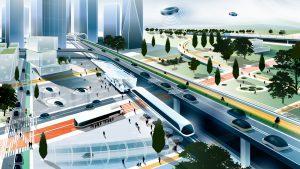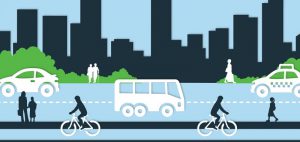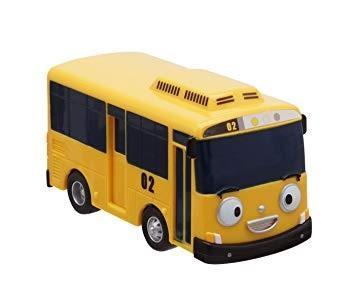Buses, America’s main mode of public transit, are often overlooked because of their perceived inefficiencies and the overall downward ridership trend. Reports of falling public transit ridership in cities across the U.S. seem to appear every day. So, why aren’t people riding buses, and what can be done to bring them back?
Solving the problem is a lot simpler than most transit agencies might think. There are several easy ways to modernize bus service without needing to completely overhaul system infrastructure, but first we must look at how we got to this point.
WHERE DID THE RIDERS GO?
It’s difficult to pinpoint an exact cause for the fall in bus ridership, as the transportation ecosystem in most cities increasingly includes a diverse and expansive arsenal of transit options, such as dockless bikes and e-scooters, but there is no doubt that fewer people are riding buses.

While external causes are undoubtedly having an effect, most major bus systems also need updates and upgrades to entice riders back. There are first/last-mile deficiencies in most cities to get riders to and from major transit hubs efficiently.
This is an area where ride-share companies, such as Uber and Lyft among others, have stepped in to get riders from the less-dense suburbs to the bustling metro systems in downtowns. But that’s also a core function of bus service. Buses reduce congestion and they can carry up to 40 people, which means there’s up to 40 fewer cars on the road.
Riders choose their mode of transit based on convenience, more so than price or other factors. This helps explain why buses may be losing out to other mobility options that make it easy to get from point A to B. Bus systems across the U.S. have been unfairly described as “ancient,” “broken” and “antiquated.” It’s no wonder riders are moving to easy-to-use options.
Some bus systems have inefficient routes because of changing roadway landscapes and new congestion patterns. Others have inconvenient payment options, meaning riders have to go out of their way to purchase tickets or have cash with them in order to ride, causing long wait times at stops.
Some systems are unreliable and riders are left waiting for a late bus that they have no way to track, so they end up choosing a different option to get to their destination on time. All of these issues point to an overarching problem: buses just aren’t as convenient to use as riders expect. For transit agencies looking to boost ridership, there are several ways to improve the situation.
THE IMPACT OF MODERNIZATION PLUS CONVENIENCE
When trying to improve bus systems to entice new riders, transit agencies should look to a few simple improvements that will boost convenience. These changes can be implemented in a short timeline and require a much lower fiscal commitment than larger infrastructure overhauls, yet they can provide immediate benefits for riders that will make the bus much more appealing.
Real-time tracking of vehicles can deliver a more convenient experience, especially in the age of ride-share where riders have become conditioned to expect constant information about the location of their vehicle as well as the estimated time of arrival at the final destination. If someone needs to ensure they arrive at a specific time, it’s easy to see why they would not ride a bus system without live vehicle tracking.
Buses must contend with traffic and other delays and, without real-time tracking, riders are left guessing when the next bus will arrive and, in turn, when they will get to their destination. For anyone commuting to work or an appointment, this uncertainty is both stressful and inconvenient.
Transit agencies can leverage vehicle tracking, an already proven technology, quickly. This data can then be shared with riders through any number of journey-planning apps, including Transit, Google Maps and others.
The next step is to provide riders with comprehensive journey planning, allowing them to map their entire trip in a single app while showing travel options ranging from buses and the subway to ride-share and bike-share. With access to pre-planned routes that combine multiple modes of transportation in one app, riders can easily choose their journey based on speed, price or other considerations.

Buses are often falsely considered a slow mode of transit, but if riders are able to see how a bus can easily connect them with other forms of transit to reach their destination faster or how the journey time of a bus route compares to other options, they can make more informed choices and are likely to use buses when they are convenient.
Riders need to be able to track and map their journeys and should also focus on in-ride experiences that will add convenience, such as those that allow them to pay for their rides without cash or needing to refill a payment card at a vending machine.
Since most bus stops are located far from transit hubs, they tend to lack ticket vending machines. If a rider doesn’t have a ticket or loaded smart card, they must pay with cash. If someone is not carrying cash — something that is increasingly more common — or only has large bills and won’t be able to get change, they are likely to seek out an alternate form of transit even if it is less efficient or more expensive.
Riders who are able to pay via their phone, in a branded agency app or in the same app they mapped and tracked their journey, will find a bus ride can be easier and more convenient than other options.
Other in-ride improvements include dedicated bus lanes and all-door boarding, which will speed up loading times and reduce delays. Alternatives to cash and paper ticketing make all-door boarding more feasible and require minimal infrastructure changes or improvements.
Transit agencies should be concerned by declining bus ridership, and it’s clear that agencies around the country are already searching for solutions to bring back riders. Major system infrastructure overhauls and new routes are great strategies, but can be time-consuming and costly.
With riders mainly choosing their mode of transit based on convenience, there are simpler ways to modernize and meet this expectation that will make a difference to riders quickly and efficiently.
The future of public transit, with private and public transport options seamlessly connected, should help move people away from private car journeys, allowing the public bus to play a key role in the future of transportation.















